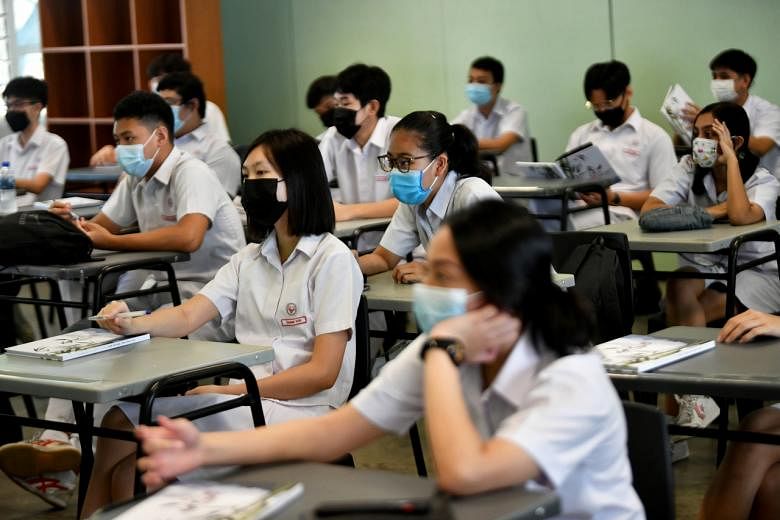The International Baccalaureate Diploma Programme (IBDP) and the A levels are both two-year-long programmes that cater mainly to students between 16 and 18 years old.
In Singapore, more students tend to opt for the A-level route. In 2019, 12,405 students sat the national exam.
A-level students are graded almost entirely on their final exams, which tend to be content-heavy.
The IBDP is considered a less frequently chosen option. Last year, 2,228 students from Singapore, including those from schools such as Anglo-Chinese School (Independent) and St Joseph's Institution (SJI), sat the diploma exam in November.
Each year, there is another sitting in May, taken mainly by international schools in Singapore.
In the IBDP, the final IB exams account for about 70 per cent to 80 per cent of the total mark for each subject, while assignments assessed by teachers and checked by external examiners contribute the rest of the final grade, according to a note on SJI's website.
The curriculum places emphasis on the research processes of the students, as well as on their inquiry and problem-solving skills.
Other key external assessments are the theory of knowledge essay and the individual extended essay, which are completed by students over a specified period of time under teacher supervision.
Mr Sean Lim, a tutor at Quintessential Education, which offers tuition for IB students, said IB coverage is more extensive, but the final exams tend to be less challenging than the A levels.
"Children who are more exam-savvy might do better in the A-level exams... The IB exams benefit students who are good at time management, independent learning and research," he said.
National Institute of Education don Jason Tan said one key difference between the two routes is that the IBDP mandates that students take a broader spread of subjects across disciplinary areas.
The A-level route requires students to take at least one contrasting subject. Many arts students tend to choose mathematics, while science students tend to choose economics, he said.
The IBDP has six subject groups: studies in language and literature; language acquisition; individuals and societies; sciences; mathematics; and the arts. Students can choose courses from these six groups.
However, they may opt to study an additional sciences, individuals and societies, or languages course, instead of a course in the arts.
Associate Professor Tan said: "But even if you forgo the arts, you still have a spread across various fields. Compared with what A-level students take, it's a wider spread across at least five different subject areas."


